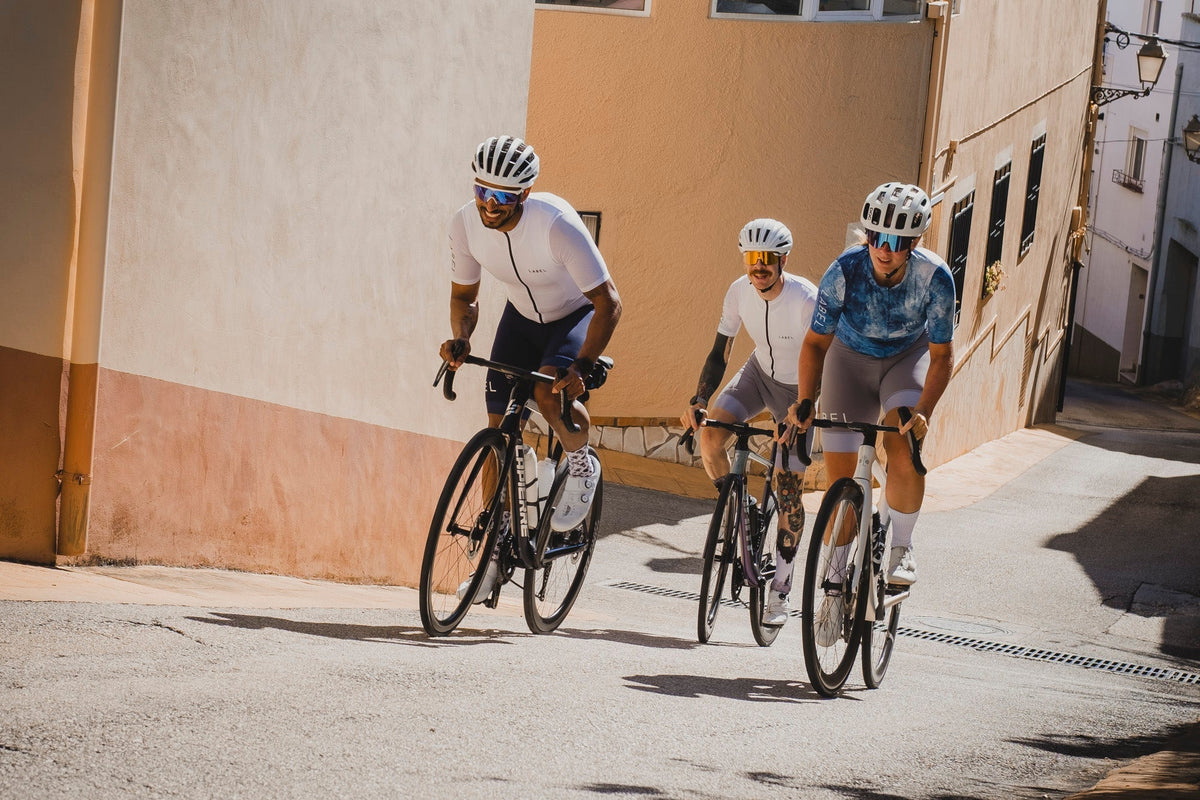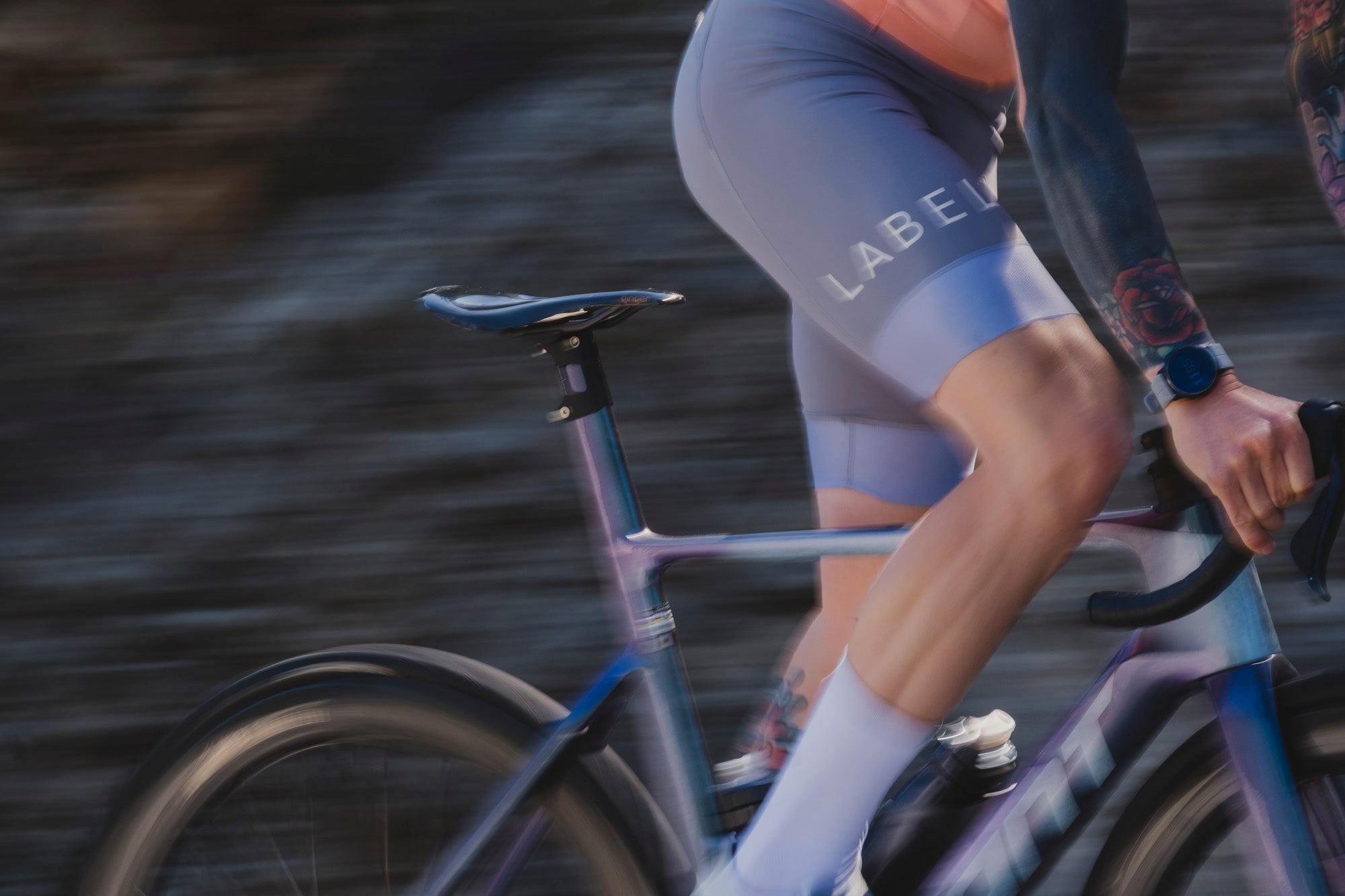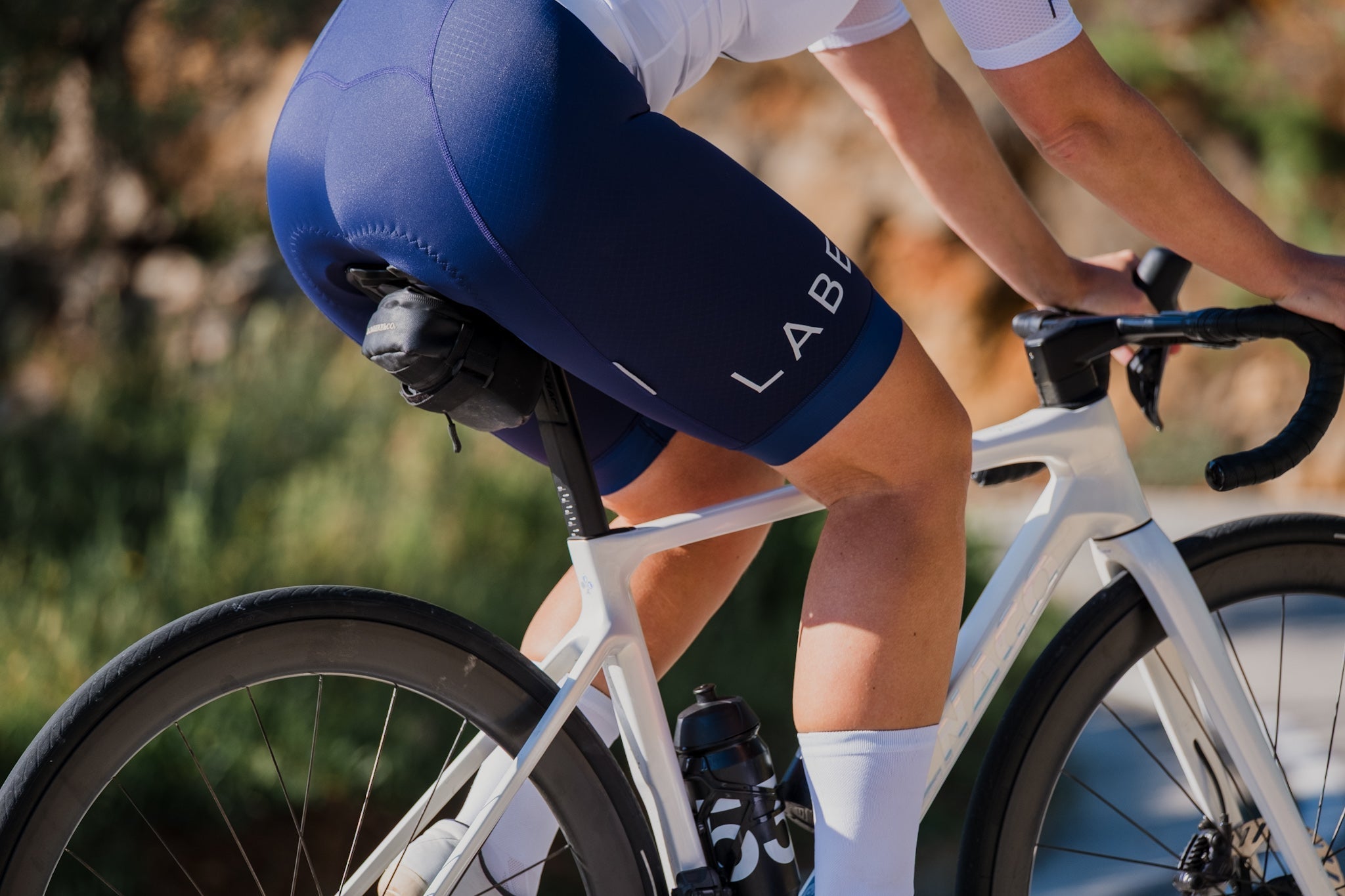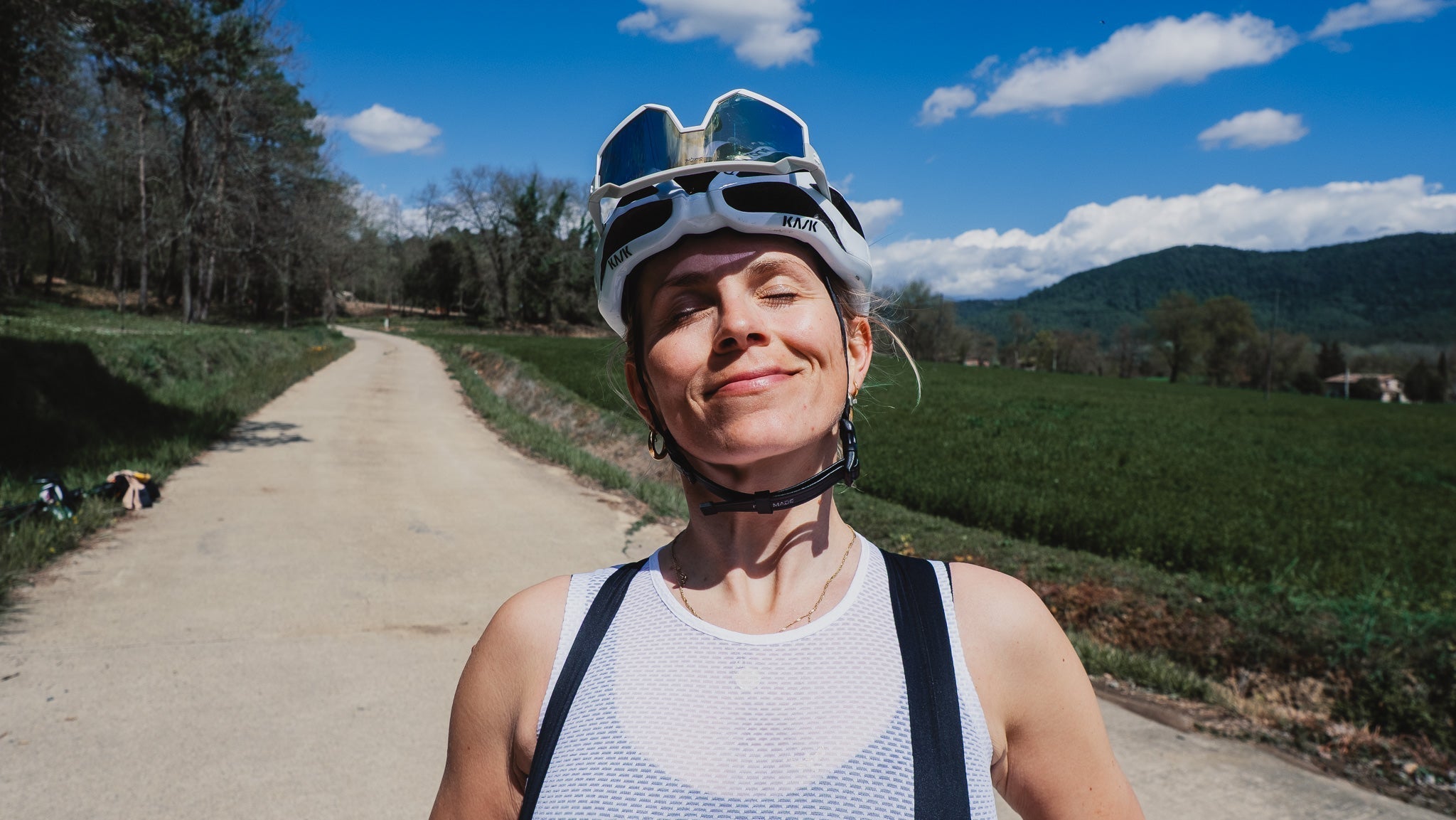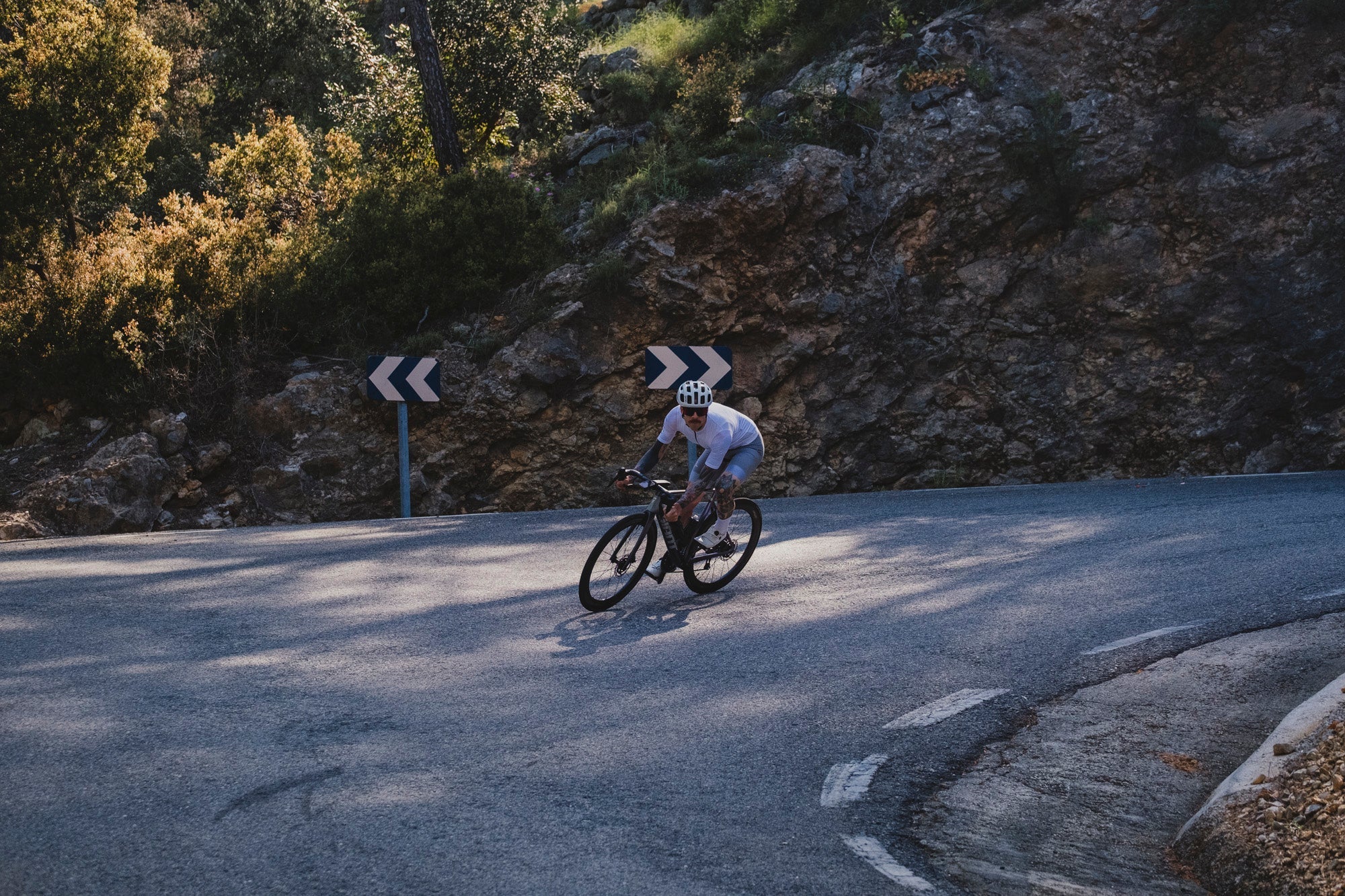
Spôsob, akým sa obliekame na cyklistiku, veľa hovorí o tom, ako myslíme. Výkon áno, ale aj vplyv. V Label Collective veríme, že by ste si nemali musieť vyberať medzi jazdou v najlepšej forme a zodpovedným životom. Preto sme naše súpravy zostavili na základe recyklovaných látok a premyslených dizajnových rozhodnutí.
Udržateľné cyklistické oblečenie nie je len o splnení podmienok. Ide o prehodnotenie toho, ako je vaše vybavenie vyrobené, ako dlho vydrží a ako sa v ňom cítite na ceste.
Táto príručka vás prevedie tým, čo robí cyklistickú súpravu skutočne udržateľnou – od pánskych a dámskych recyklovaných cyklistických dresov až po vysokovýkonné recyklované cyklistické štartéry.
Čo robí cyklistické oblečenie udržateľným?
Materiály: Od plastových fliaš až po funkčné látky
Udržateľné cyklistické oblečenie začína so surovinami. Naše oblečenie pochádza z recyklovaných zdrojov – najmä z PET plastových fliaš a priemyselného odpadu. Tieto sa premieňajú na vysoko kvalitné vlákna, ktoré fungujú rovnako dobre ako panenský polyester, ale majú oveľa nižšiu environmentálnu stopu.
Vyberáme si recyklované látky, pretože sú overené, sledovateľné a vyrobené pre dlhodobé používanie.
Čo skutočne znamenajú „recyklované látky“ v cyklistickom oblečení
Nie všetky recyklované látky sú si rovné. Niektoré obsahujú len malé percento recyklovaného obsahu. Iné strácajú na pružnosti alebo priedušnosti. Používame iba látky, ktoré spĺňajú prísne normy pre odolnosť, reguláciu vlhkosti a pohodlie – a to aj pri dlhých alebo intenzívnych jazdách.
Každý kus v našej recyklovanej cyklistickej súprave, od dresov až po značkové oblečenie, je vyrobený s ohľadom na túto rovnováhu.
Prečo sme si vybrali recyklovaný materiál namiesto organickej bavlny alebo bambusu
Organické a rastlinné vlákna znejú dobre, ale nie sú vždy vhodné pre vysokovýkonné cyklistické vybavenie. Často absorbujú priveľa vlhkosti, nie sú elastické a rýchlejšie sa rozpadajú.
Recyklovaný polyester na druhej strane poskytuje výkon a znižuje odpad. Preto sme sa zaviazali, že ho použijeme ako náš hlavný materiál.
Recyklované cyklistické dresy: štýl, strih a funkčnosť
Ako sa recyklované vlákna správajú na bicykli
Recyklovaný cyklistický dres by sa mal cítiť ako každý iný špičkový dres. Ľahký, priedušný a aerodynamický. Naše dresy sú vyrobené z vysoko elastických recyklovaných tkanín, ktoré rýchlo odvádzajú pot a rýchlo schnú – ideálne na letné stúpania, dlhé túry alebo intenzívne intervaly.
Sú mäkké na pokožku, ale zároveň dostatočne pevné, aby vydržali sezónu čo sezónu.
Priedušnosť, regulácia vlhkosti a dlhá životnosť
Každý recyklovaný dres obsahuje sieťované panely, kde sa teplo hromadí najviac – zvyčajne pozdĺž chrbta alebo v podpazuší. Samotná tkanina pomáha rýchlo odvádzať pot.
A pretože je vyrobený tak, aby vydržal, nemusíte ho po jednej sezóne vymieňať. Menej nákupov, menší dopad.

Recyklované cyklistické podbradníky: Pohodlie a zodpovednosť
Prečo sú podbradníky najdôležitejšie na dlhé jazdy
Ak je jedno miesto, do ktorého by ste mali investovať, sú to podbradníky. V sedle ste celé hodiny a pohodlie závisí od všetkého – od umiestnenia kamzíka až po dizajn popruhov.
Preto sa naše recyklované cyklistické podbradníky zameriavajú na oporu, štruktúru a čisté, minimalistické švy.
Pánske cyklistické podbradníky z recyklovaného materiálu
Pánske recyklované cyklistické nohavice od Label Collective sú vyrobené z recyklovanej tkaniny s vysokou hustotou pre pevnú oporu. Priliehajú bez obmedzení a naša vložka z jelenice je navrhnutá pre jazdy na dlhé vzdialenosti.
Laserom rezané popruhy sedia plocho cez ramená, bez pohybu alebo trenia pri zmene polohy.
Dámske cyklistické podbradníky z recyklovaného materiálu
Dámske cyklistické nohavice z recyklovaného materiálu sú navrhnuté s ohľadom na odlišnú anatómiu. Prepracovali sme umiestnenie popruhov pre pohodlie okolo hrudníka, pridali sme flexibilnú oporu v páse a vytvarovali sme jelenicu pre uvoľnenie panvových kostí a pohyb.
Toto nie sú zmenšené pánske podbradníky. Sú vyrobené od základu, z recyklovaných výkonnostných materiálov.
Kompletná cyklistická súprava z recyklovaného materiálu: Beyond Fabric
Minimálne úpravy, Zodpovedné farbivá, Lokálna výroba
Látka je len začiatok. Naše zipsy, lemy a nite sú minimalistické. Vyhýbame sa zbytočným povrchovým úpravám a volíme farbivá s nízkym dopadom na životné prostredie, ktoré znižujú plytvanie vodou.
Spolupracujeme aj s výrobcami so sídlom v EÚ s cieľom znížiť emisie z dopravy a udržať vysokú kvalitu.
Trvanlivosť ako forma udržateľnosti
Jedna súprava, ktorá vydrží tri sezóny, je udržateľnejšia ako tri lacné súpravy, ktoré sa rýchlo rozpadajú. Preto každý produkt vyrábame tak, aby vydržal – nielen z hľadiska materiálov, ale aj šitia, udržania strihu a opotrebovania pri praní.
Oprava, opätovné použitie a čo robíme inak
Ponúkame opravy roztrhaných švov, zlomených zipsov alebo predčasného opotrebenia. Radšej vám opravíme váš obľúbený dres, ako vám predáme nový.
Nejde o trendy ani nadprodukciu. Ide o oblečenie, ktoré si zaslúži svoje miesto vo vašej zásuvke – a zostane tam.
Ako si vybrať správnu cyklistickú súpravu pre udržateľné využitie
Na čo si dať pozor pri výbere recyklovaného cyklistického oblečenia
-
Percento recyklovaného obsahu (cieľom je 80 – 100 %)
-
Trvanlivosť a regenerácia po natiahnutí
-
Riadenie vlhkosti a vetranie
-
Strih prispôsobený vášmu telu, nie všeobecným strihom
-
Transparentné informácie o dodávateľskom reťazci
Nenechajte sa zmiasť vágnymi „ekologickými“ tvrdeniami. Hľadajte údaje, zdroje a jasné rozhodnutia o dizajne.
Ako testujeme naše súpravy
Každá súprava Label Collective prechádza testovaním v reálnom prostredí cyklistami – dlhé jazdy, náročné intervaly, rôzne podnebie. Počúvame, vylepšujeme a upravujeme.
Nič sa nedostane do výroby bez dôkazu o jeho funkčnosti.
Keď udržateľnosť nie je len módnym slovom
Nezačali sme s recyklovanými stavebnicami, pretože to bolo trendy. Urobili sme to, pretože to bolo zodpovedné. A robíme to stále, pretože to funguje.
Pre nás udržateľnosť nie je len o planéte. Ide o to, aby sme robili rozhodnutia, ktoré rešpektujú jazdca, tvorcu a komunitu.
Rovnováha v pohybe: Prečo je to viac než len slogan
Myšlienky za Label Collective
Založili sme Label Collective, aby sme spochybnili, ako cyklistické značky vyzerajú, komu slúžia a čo si zaslúžia.
Výkon nepotrebuje humbuk. Udržateľnosť nepotrebuje slogany. Štýl nepotrebuje kompromisy.
Komunita, zodpovednosť a zachovanie ľudskosti
Rozprávame sa s našimi jazdcami. Opravujeme pokazené súpravy. Vyrábame obmedzené množstvá, aby sme predišli plytvaniu.
Nie je to vždy dokonalé – ale je to skutočné.
Čo bude ďalej v oblasti udržateľnej cyklistiky
Pracujeme na nových zmesiach látok, hlbšom využívaní lokálnych zdrojov a lepších programoch spätného odberu.
A budeme klásť ťažké otázky, aj keď odpovede budú pomalé.
Jazdite vedome. Noste zodpovedne.
Nakupujte naše kolekcie
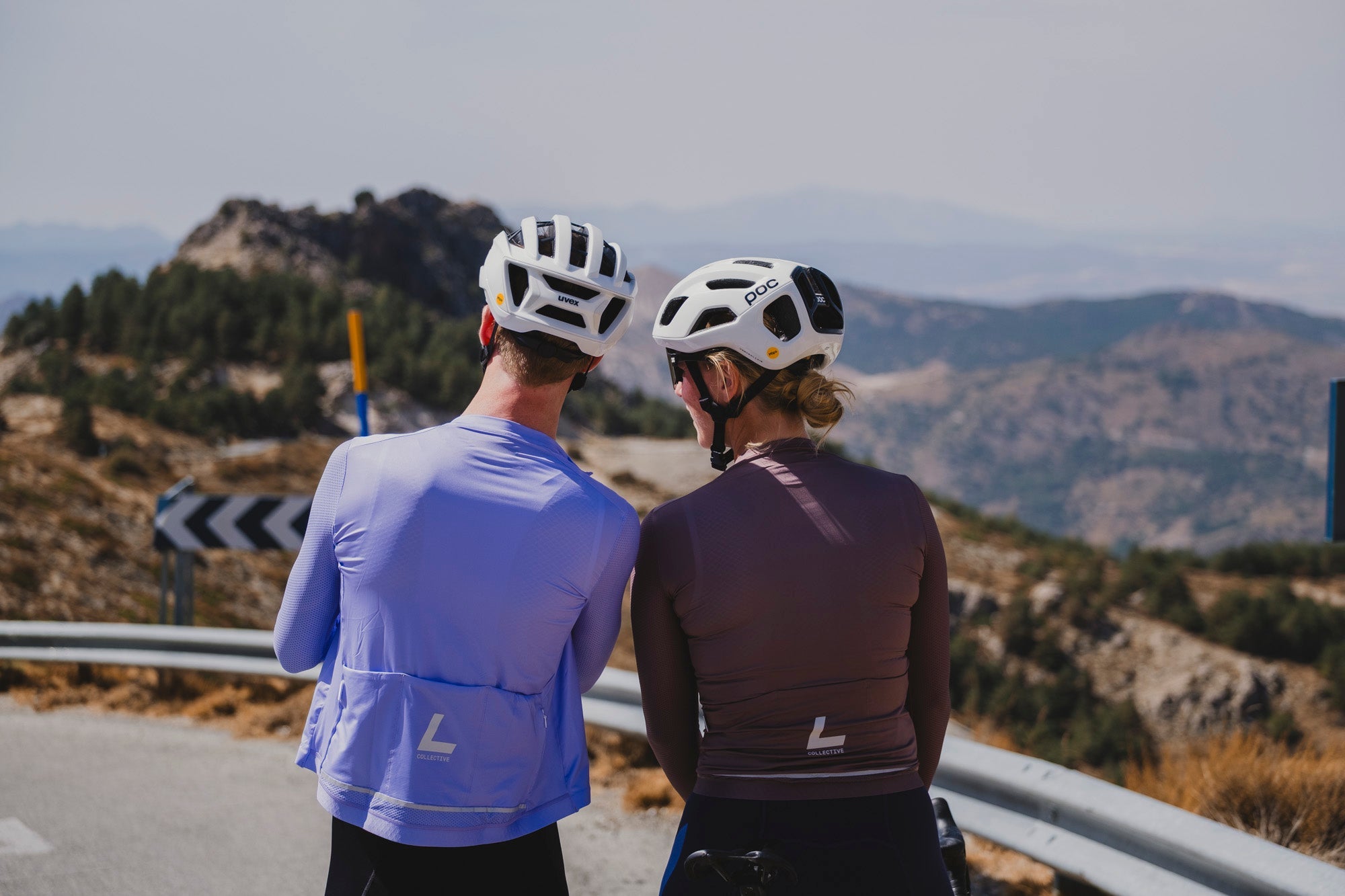
Dresy
